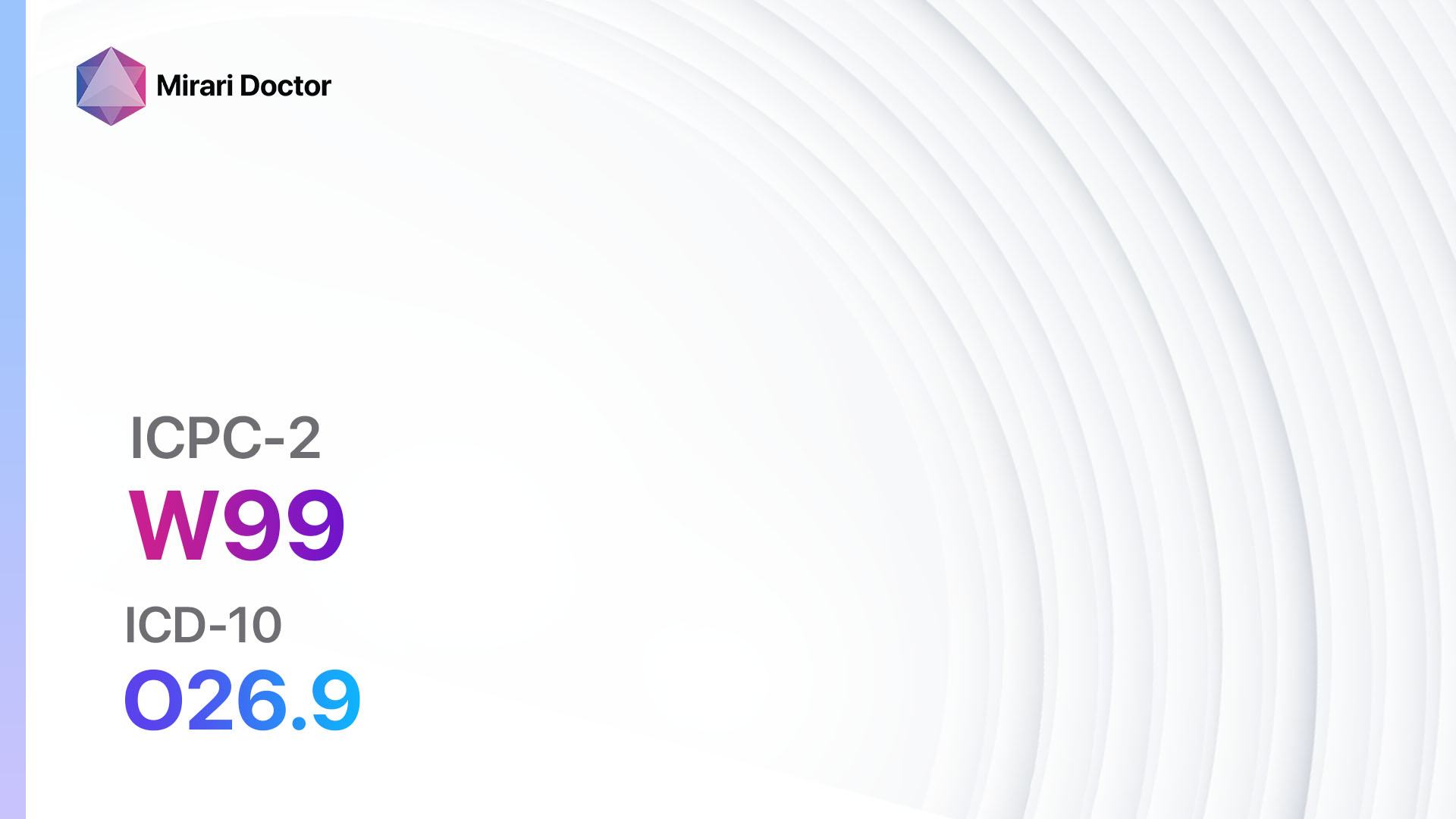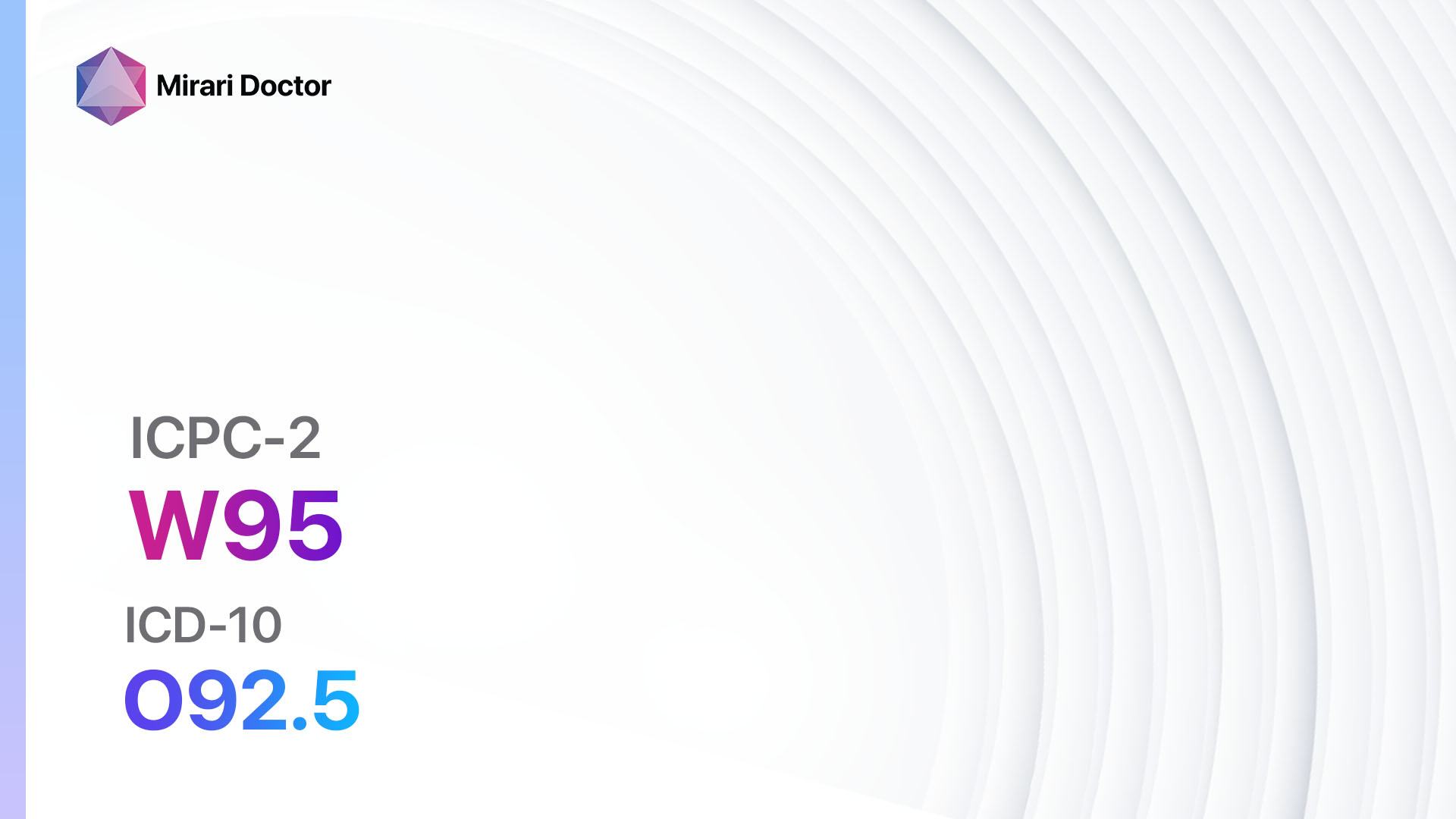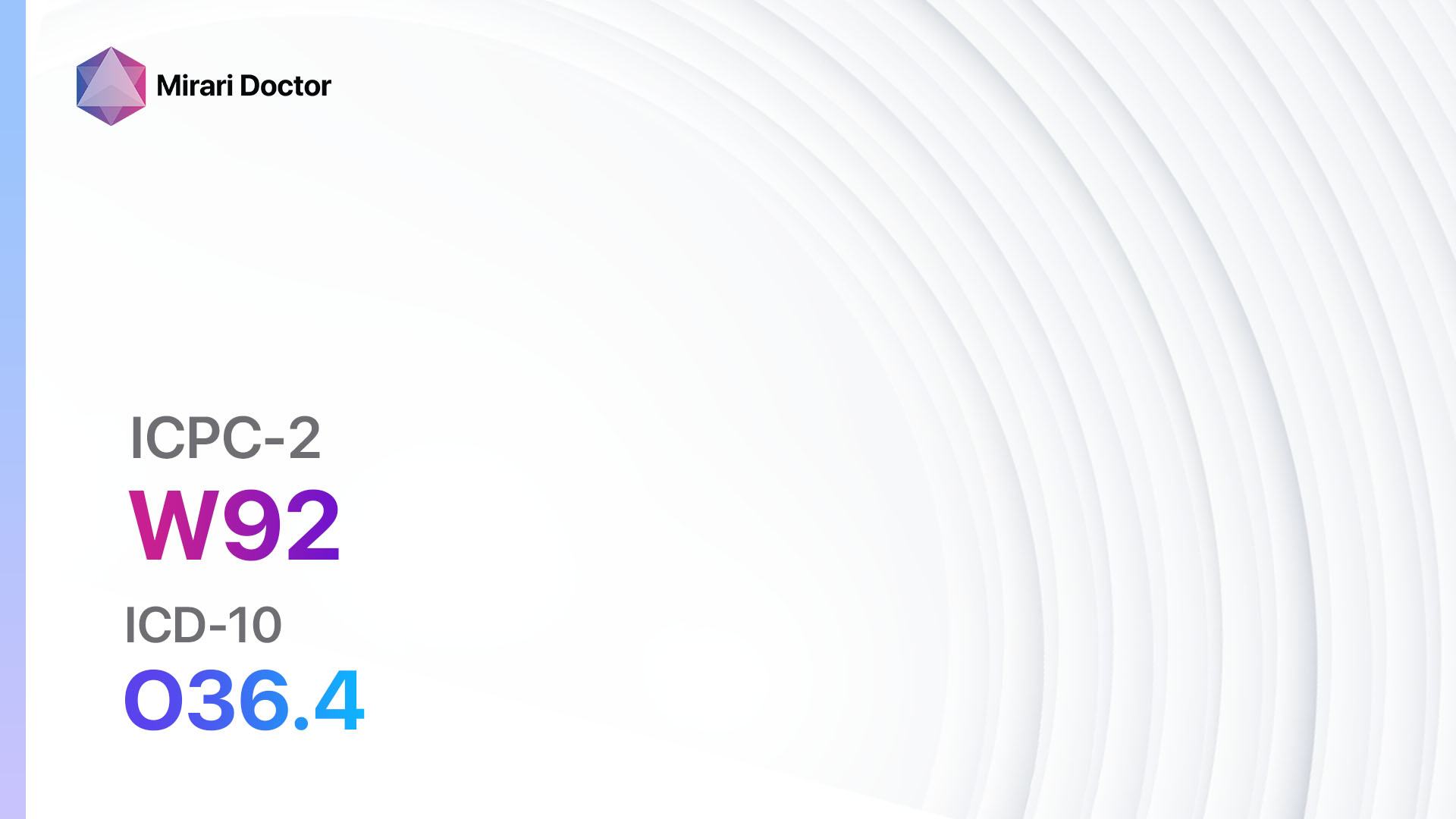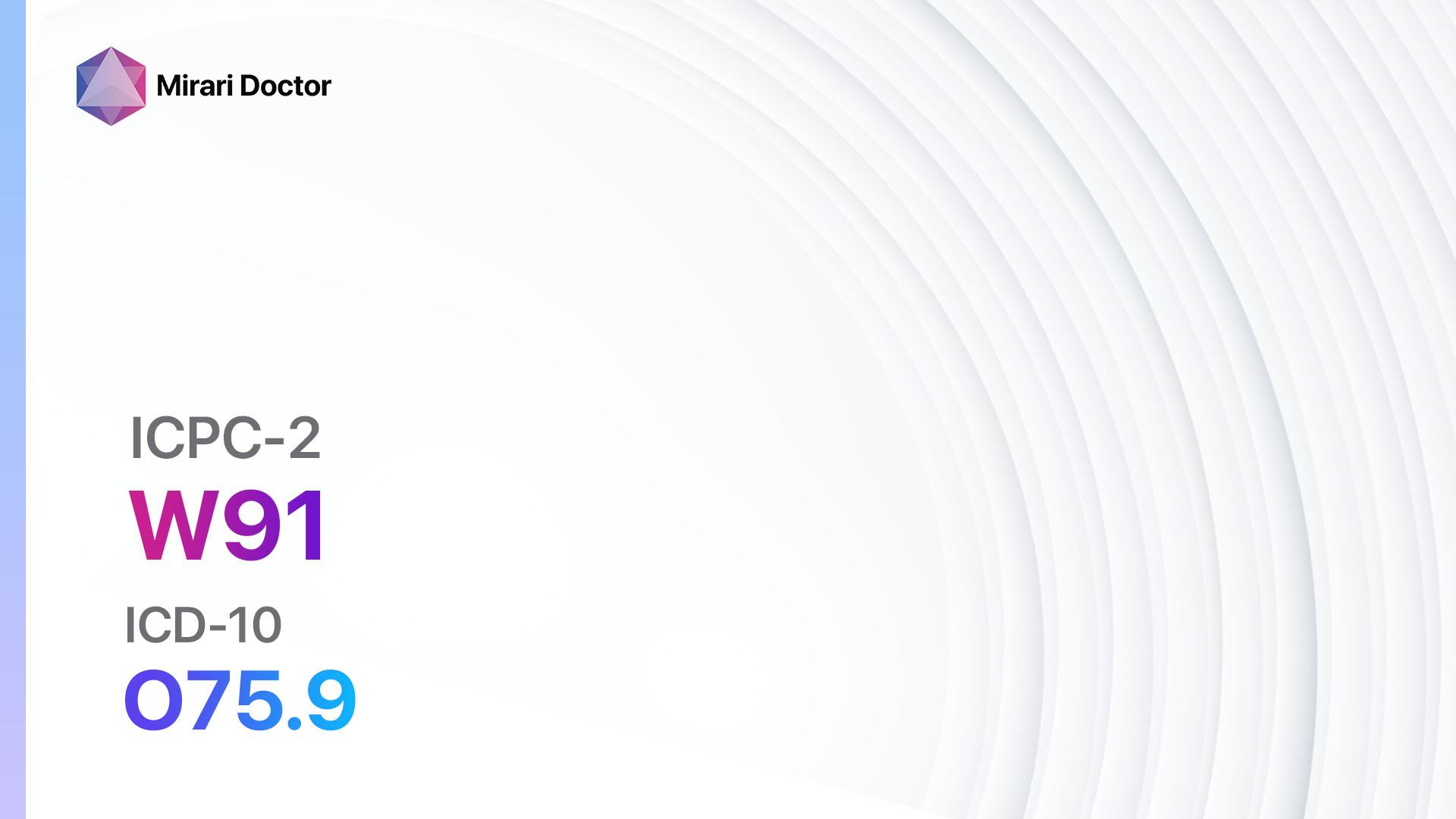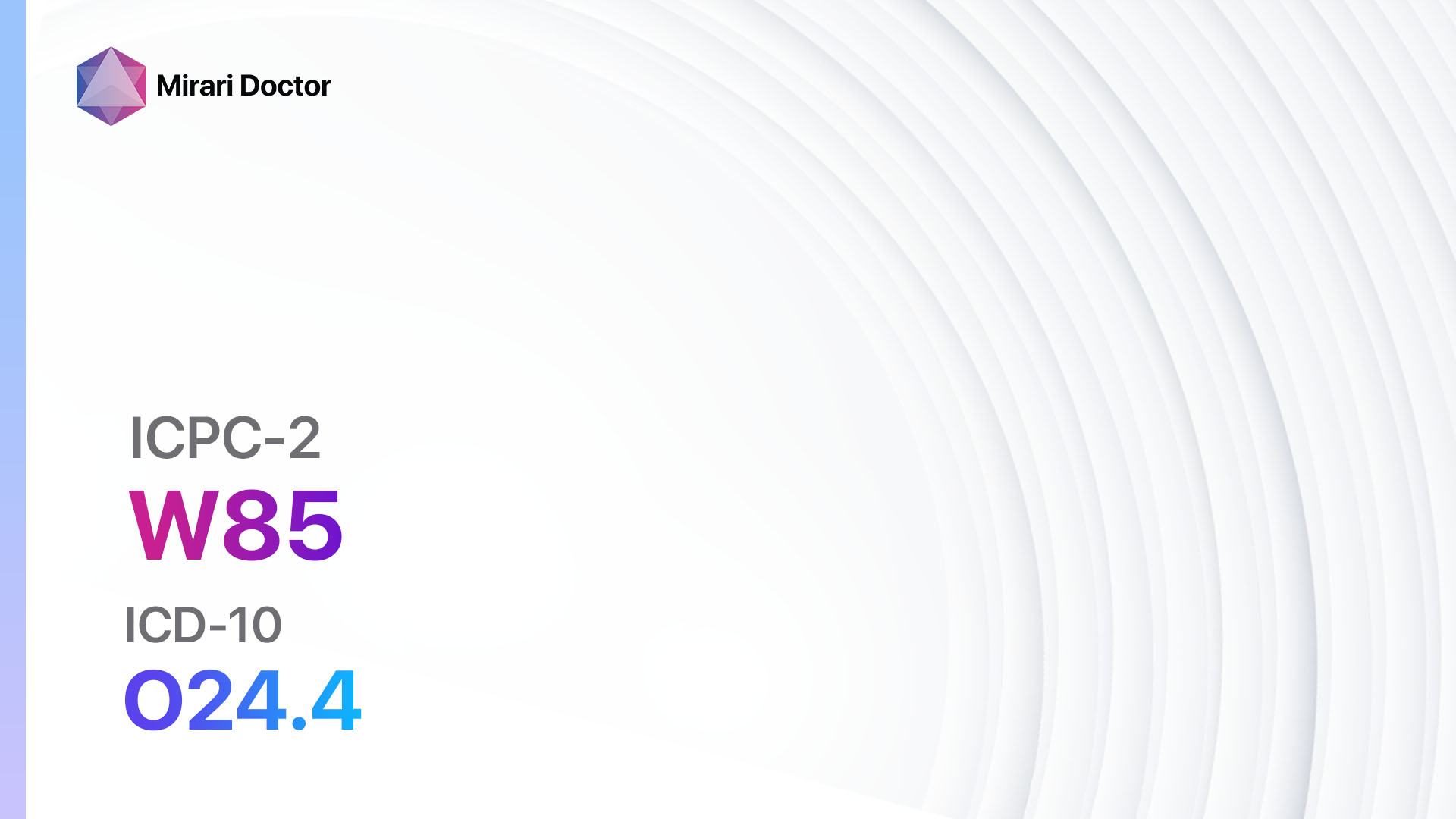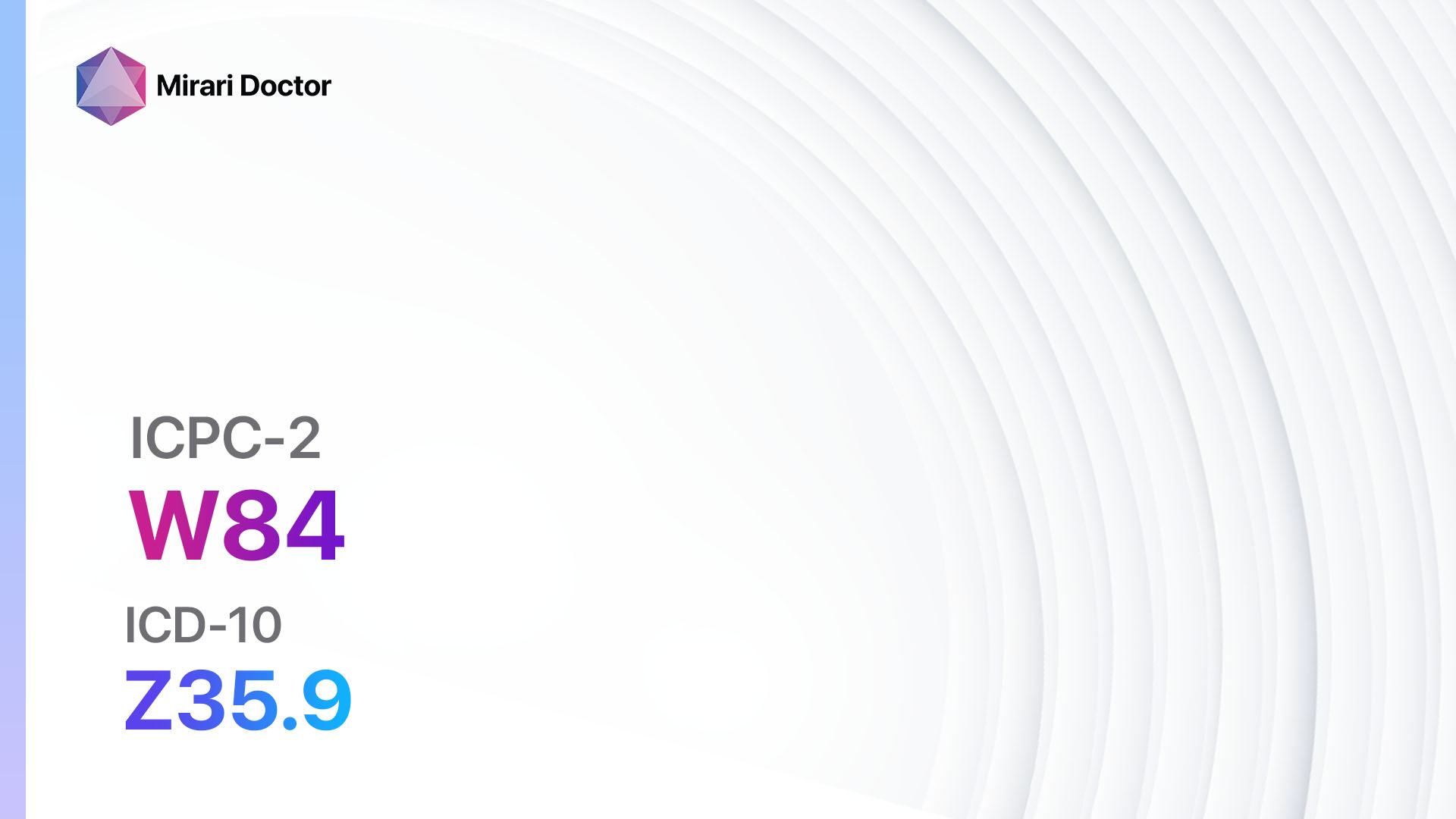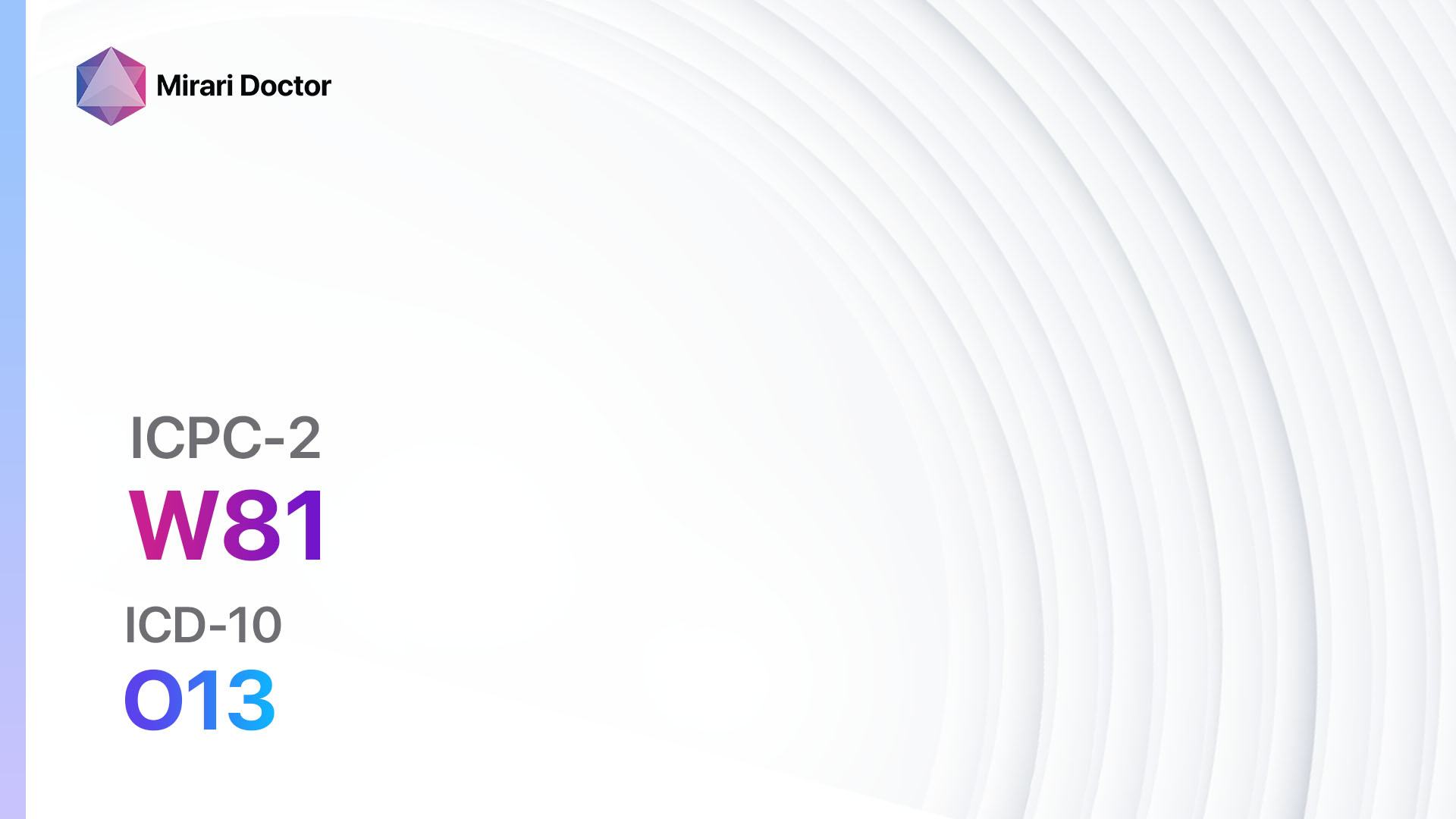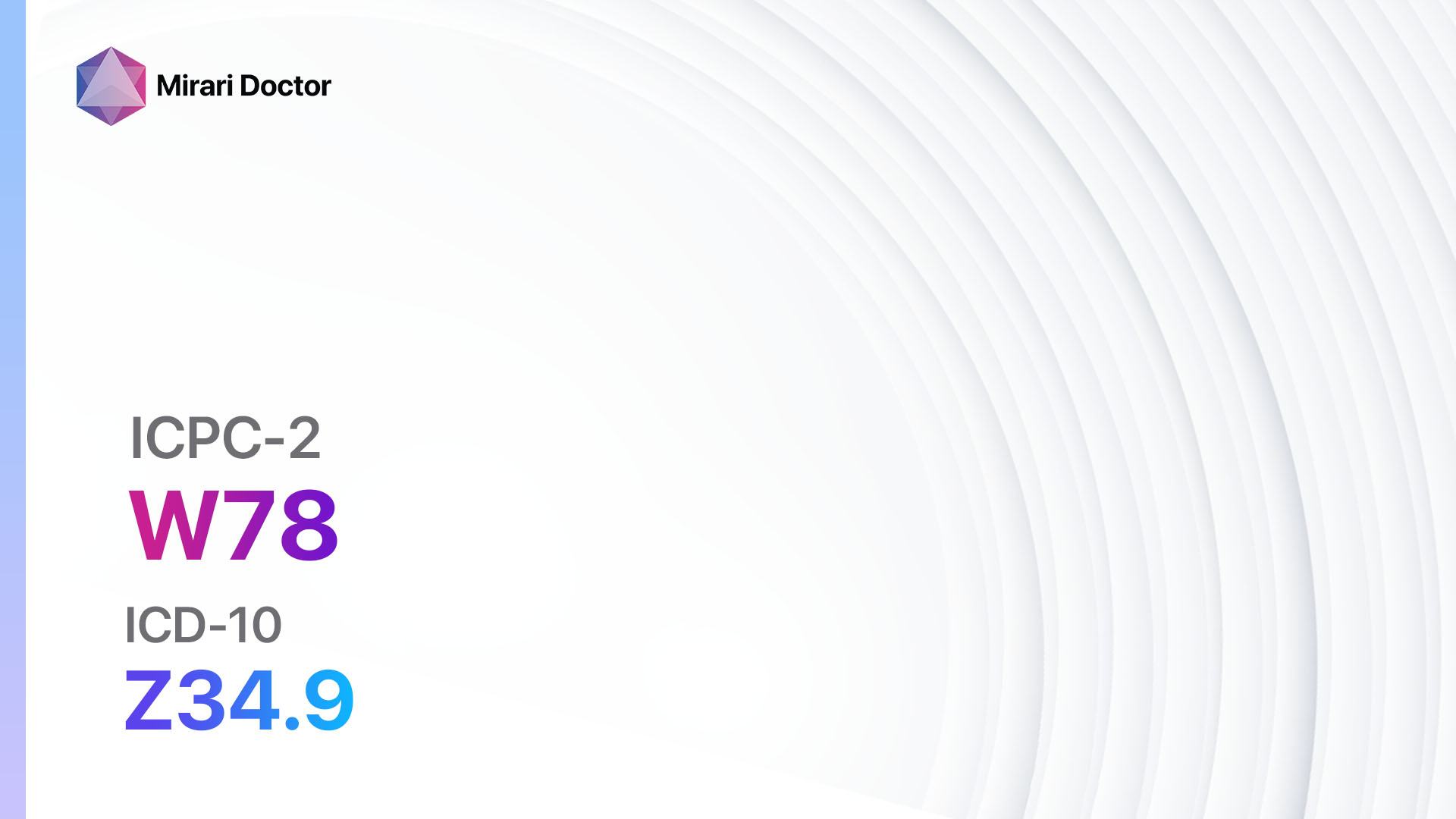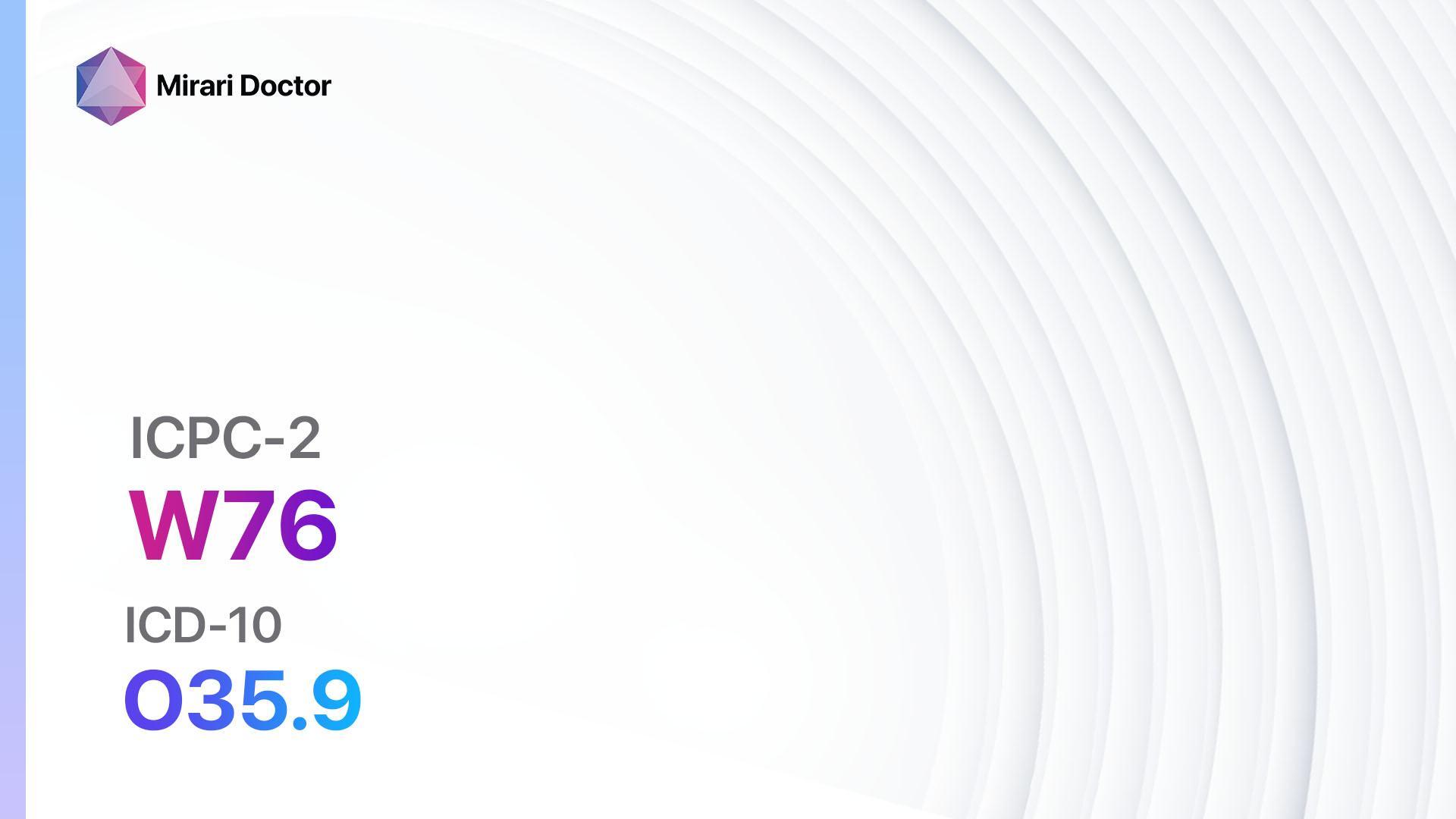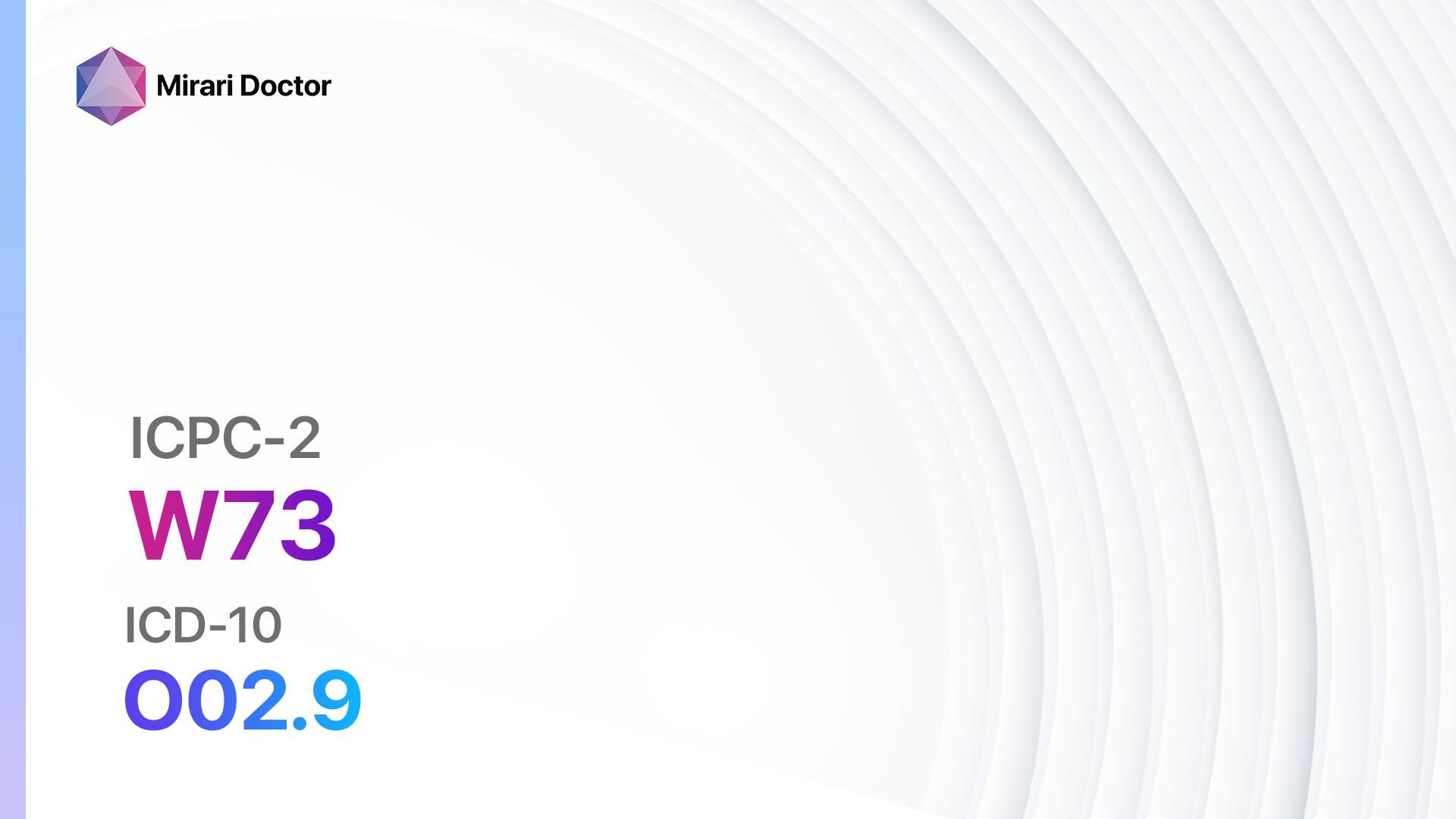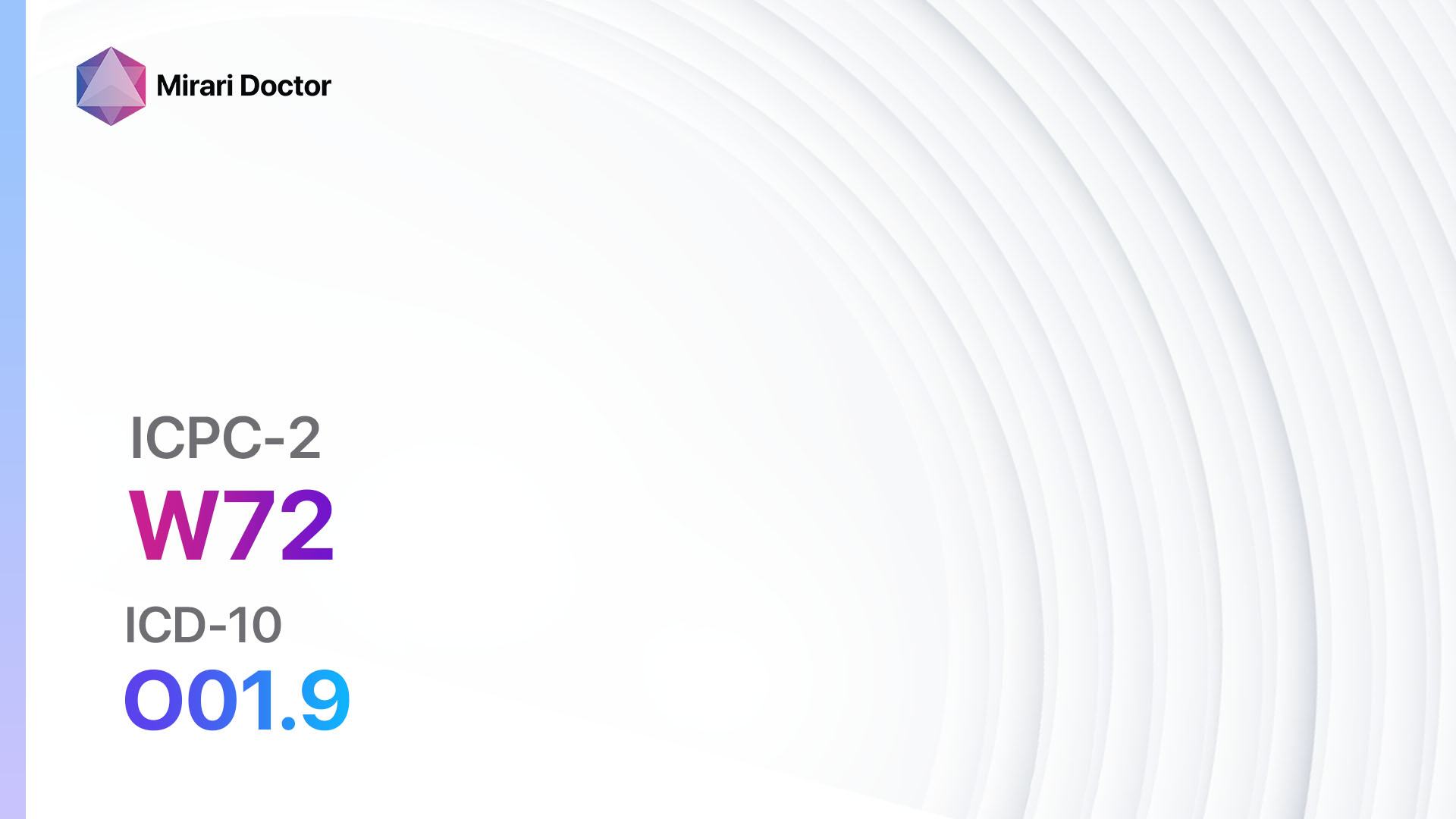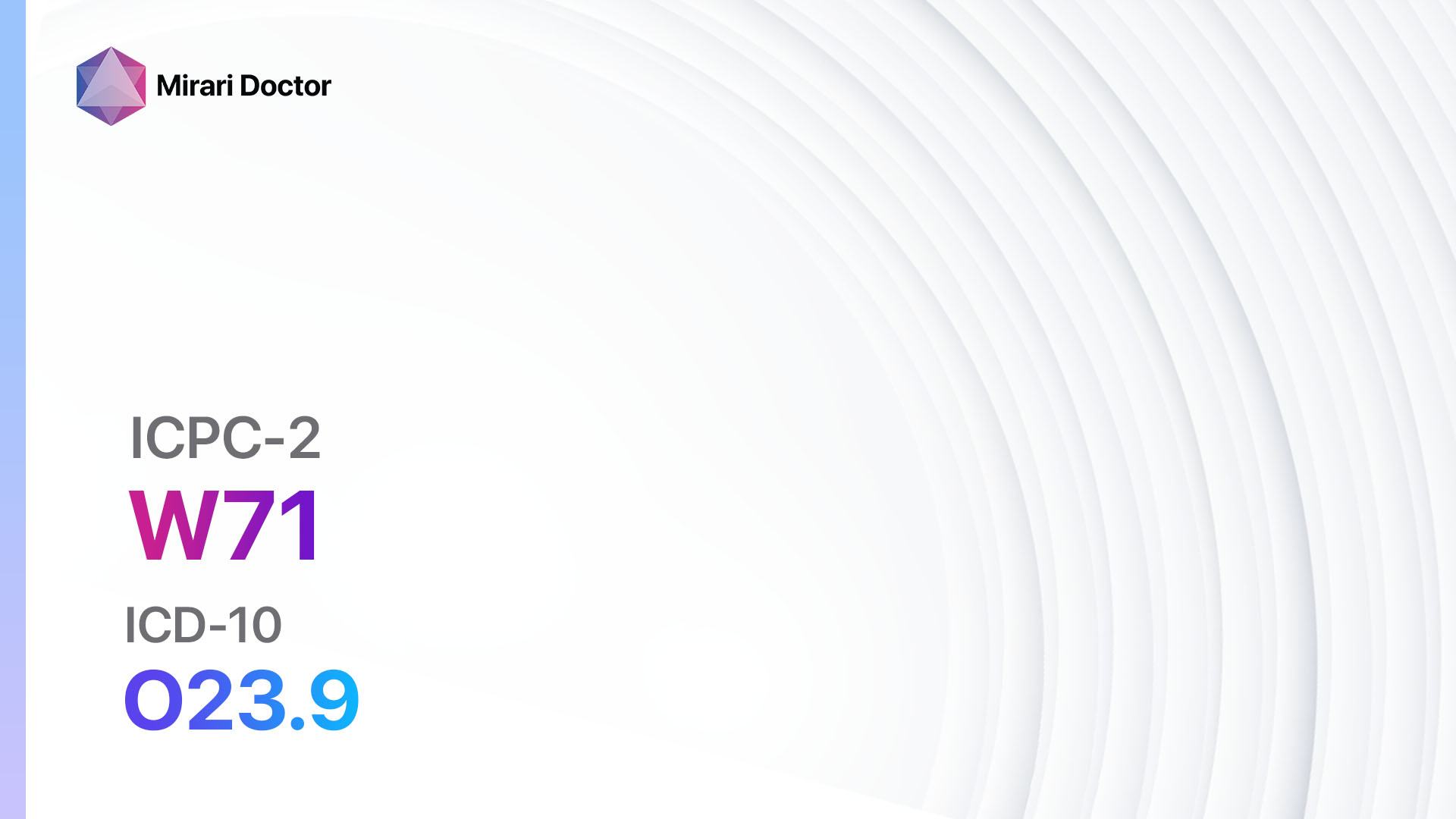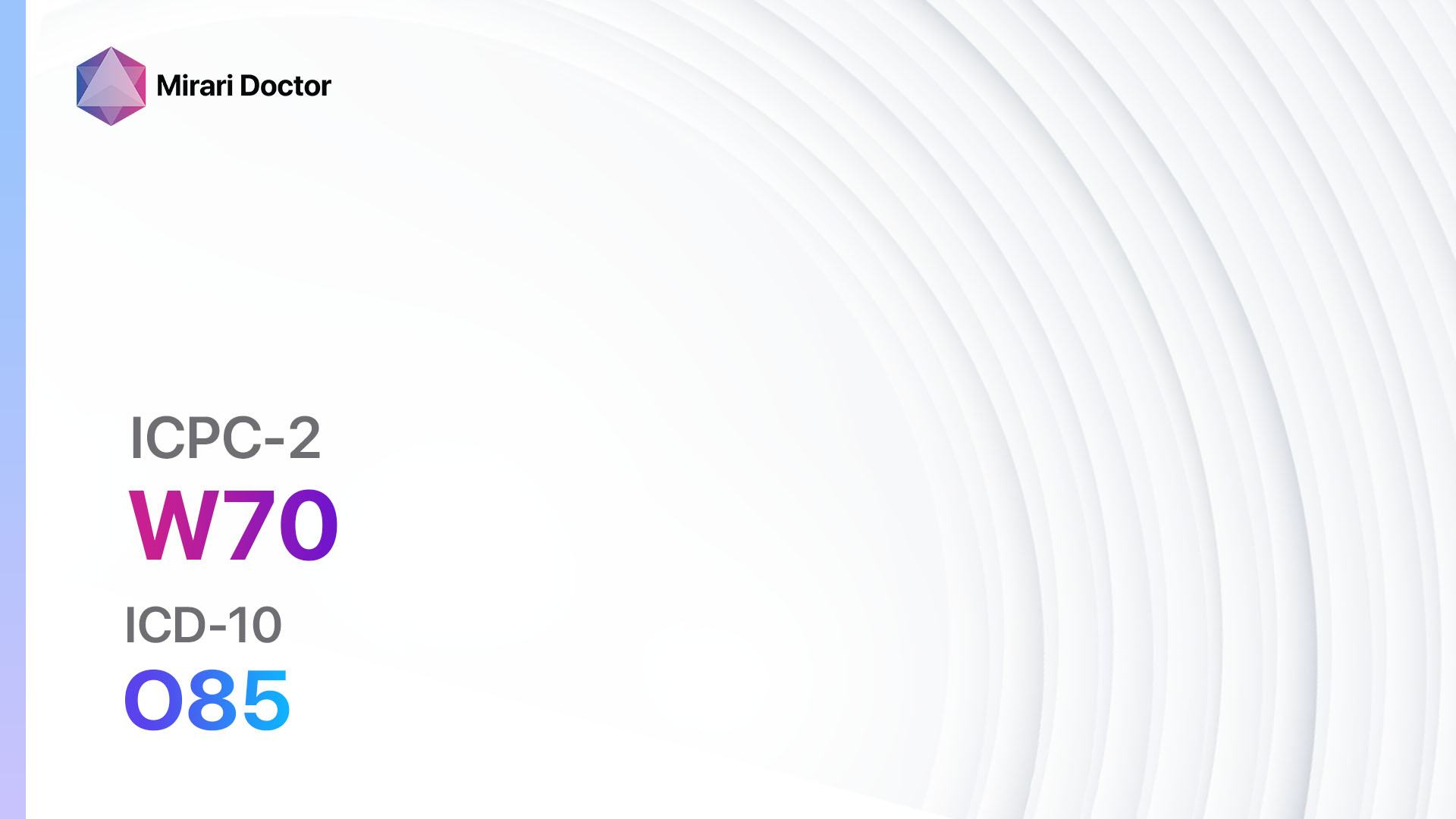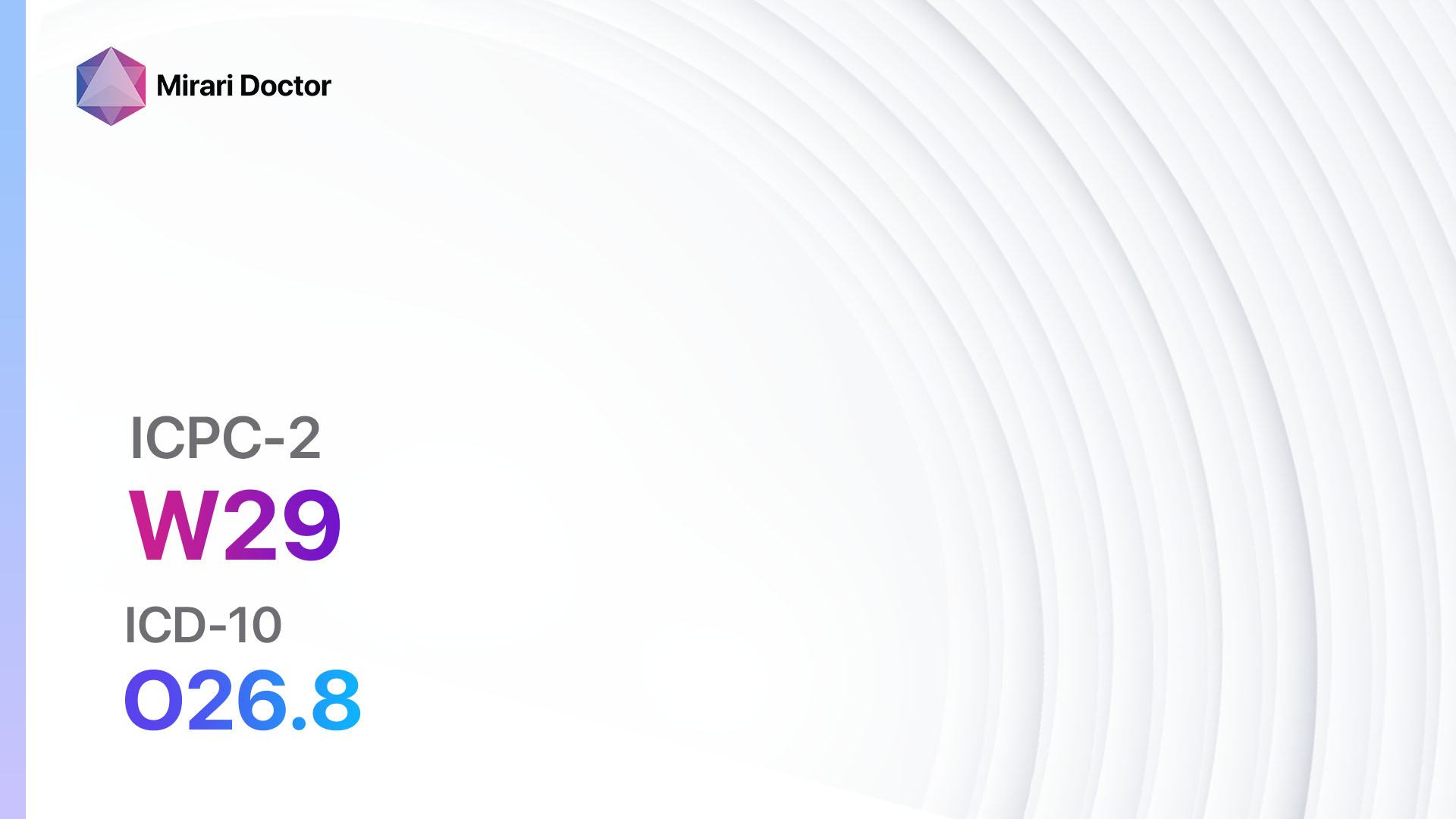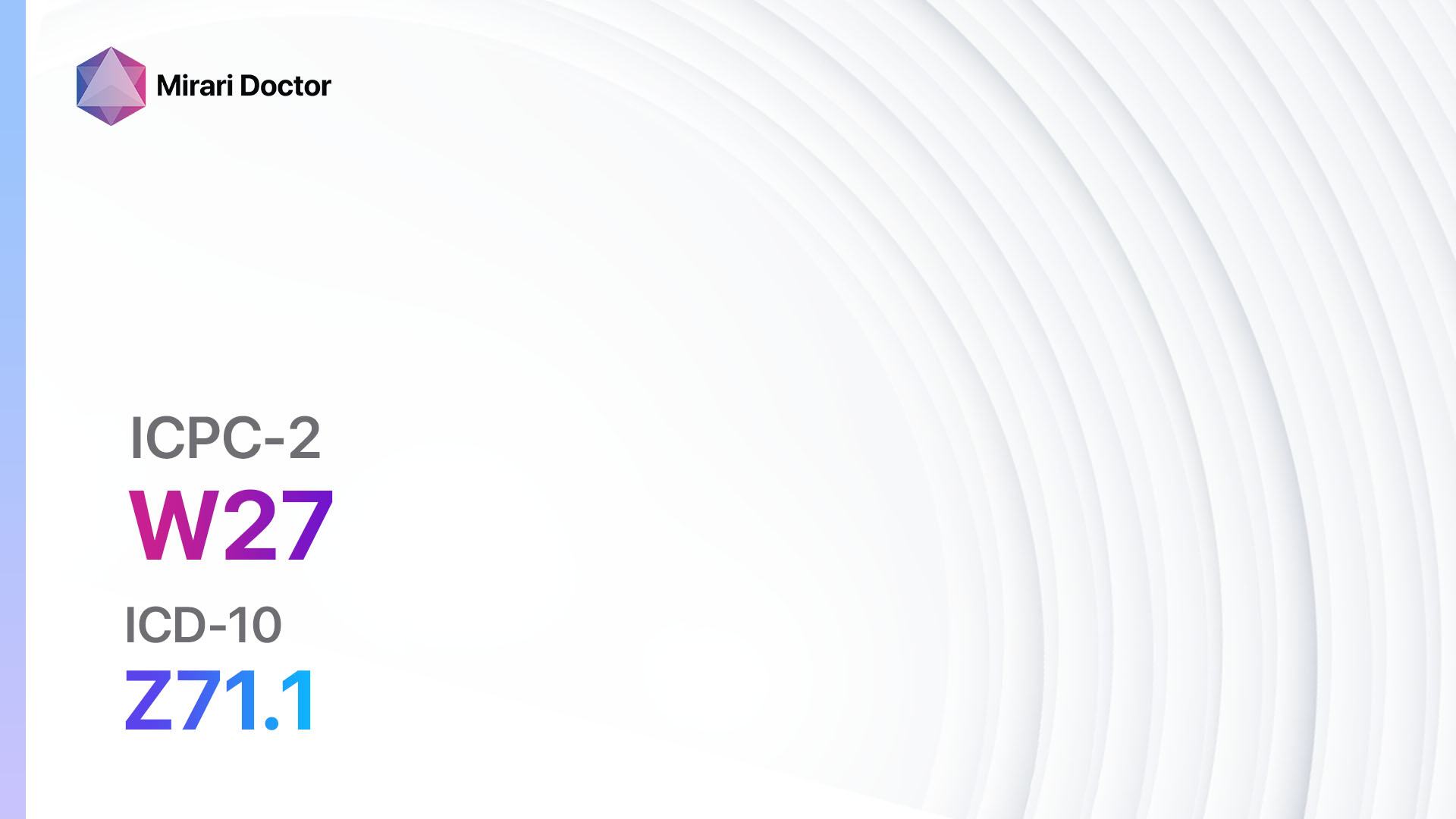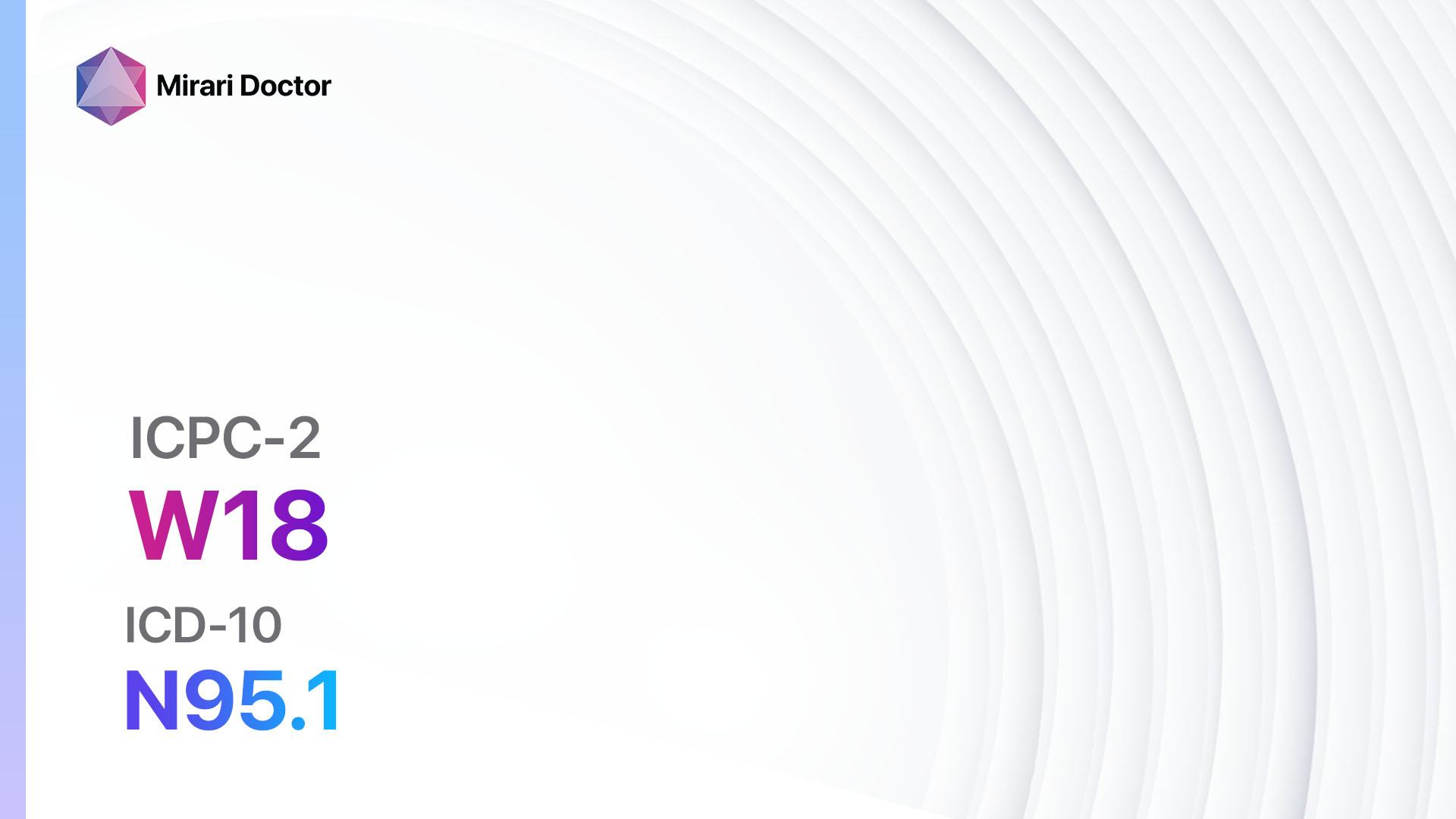
Introduction
Injury complicating pregnancy refers to any physical trauma or injury that occurs during pregnancy. It is a significant condition as it can have serious implications for both the mother and the developing fetus[1]. The aim of this guide is to provide healthcare professionals with a comprehensive overview of the symptoms, causes, diagnostic steps, possible interventions, and patient education related to injury complicating pregnancy.
Codes
- ICPC-2 Code: W75 Injury complicating pregnancy
- ICD-10 Code: O9A.2 Injury, poisoning and certain other consequences of external causes complicating pregnancy[2]
Symptoms
- Abdominal pain: The pregnant woman may experience abdominal pain, which can range from mild to severe[3].
- Vaginal bleeding: Vaginal bleeding can occur as a result of the injury[4].
- Contractions: Injury to the uterus or surrounding structures can lead to contractions[5].
- Decreased fetal movement: The mother may notice a decrease in fetal movement following the injury[6].
- Shoulder pain: Shoulder pain can be a sign of internal bleeding[7].
Causes
- Motor vehicle accidents: Car accidents can result in injury to the pregnant woman and the fetus[8].
- Falls: Falls can cause trauma to the abdomen or other parts of the body[9].
- Physical assault: Physical assault can lead to injury complicating pregnancy[10].
- Sports injuries: Participation in sports activities can result in injury to the pregnant woman.
- Domestic violence: Domestic violence can cause physical trauma to the pregnant woman.
Diagnostic Steps
Medical History
- Gather information about the circumstances surrounding the injury, such as the mechanism of injury and any associated symptoms.
- Determine the gestational age of the pregnancy.
- Assess the patient’s medical history, including any pre-existing conditions or risk factors.
Physical Examination
- Perform a thorough physical examination, focusing on the abdomen, pelvis, and any areas of pain or tenderness.
- Check for signs of vaginal bleeding or other signs of injury.
- Assess fetal heart rate and movement.
Laboratory Tests
- Complete blood count (CBC): A CBC can help assess for signs of internal bleeding or infection.
- Blood type and Rh factor: This information is important in case a blood transfusion is needed.
- Coagulation profile: A coagulation profile can help evaluate the patient’s clotting ability.
- Urinalysis: A urinalysis can help assess kidney function and detect any signs of infection.
Diagnostic Imaging
- Ultrasound: An ultrasound can be used to assess the fetus and the uterus for any signs of injury or abnormalities.
- X-ray: In some cases, an X-ray may be necessary to evaluate for fractures or other skeletal injuries.
- CT scan: A CT scan may be ordered if there is suspicion of internal organ injury.
Other Tests
- Non-stress test: A non-stress test may be performed to assess fetal well-being and monitor for any signs of distress.
- Biophysical profile: A biophysical profile combines an ultrasound with a non-stress test to evaluate fetal well-being.
- Amniocentesis: In certain cases, an amniocentesis may be performed to assess for any signs of infection or fetal distress.
Follow-up and Patient Education
- Schedule follow-up appointments to monitor the progress of the pregnancy and assess for any complications.
- Provide the patient with information on signs and symptoms to watch out for and when to seek medical attention.
- Educate the patient on the importance of rest and avoiding strenuous activities.
Possible Interventions
Traditional Interventions
Medications:
Top 5 drugs for injury complicating pregnancy:
- Acetaminophen (e.g., Tylenol):
- Cost: $5-$10 for a bottle of 100 tablets.
- Contraindications: Allergy to acetaminophen.
- Side effects: Rare, but can include liver damage with high doses.
- Severe side effects: Severe allergic reactions.
- Drug interactions: None significant.
- Warning: Do not exceed the recommended dosage.
- Opioid analgesics (e.g., Oxycodone, Hydrocodone):
- Cost: Varies depending on the specific medication and dosage.
- Contraindications: Allergy to opioids, respiratory depression.
- Side effects: Nausea, constipation, drowsiness.
- Severe side effects: Respiratory depression, addiction.
- Drug interactions: Other sedating medications.
- Warning: Use with caution and under close supervision.
- Antibiotics (e.g., Amoxicillin, Cephalexin):
- Cost: Varies depending on the specific medication and dosage.
- Contraindications: Allergy to antibiotics.
- Side effects: Nausea, diarrhea, allergic reactions.
- Severe side effects: Severe allergic reactions, antibiotic resistance.
- Drug interactions: None significant.
- Warning: Take the full course of antibiotics as prescribed.
- Anticoagulants (e.g., Heparin, Enoxaparin):
- Cost: Varies depending on the specific medication and dosage.
- Contraindications: Active bleeding, history of heparin-induced thrombocytopenia.
- Side effects: Bleeding, bruising.
- Severe side effects: Severe bleeding, heparin-induced thrombocytopenia.
- Drug interactions: Other blood thinners, NSAIDs.
- Warning: Regular monitoring of blood clotting parameters is required.
- Tocolytics (e.g., Terbutaline, Nifedipine):
- Cost: Varies depending on the specific medication and dosage.
- Contraindications: Uncontrolled hypertension, heart disease.
- Side effects: Rapid heartbeat, tremors.
- Severe side effects: Chest pain, shortness of breath.
- Drug interactions: Beta-blockers, calcium channel blockers.
- Warning: Use with caution and under close supervision.
Alternative Drugs:
- Nonsteroidal anti-inflammatory drugs (NSAIDs) (e.g., Ibuprofen): Can be used for pain relief, but should be avoided in the third trimester.
- Muscle relaxants (e.g., Cyclobenzaprine): Can be used for muscle spasms, but should be used with caution and under close supervision.
- Antidepressants (e.g., Sertraline): May be prescribed if the patient is experiencing depression or anxiety as a result of the injury.
Surgical Procedures:
- Cesarean section: In cases where the injury poses a risk to the mother or the fetus, a cesarean section may be performed.
- Repair of lacerations: If there are any lacerations or tears as a result of the injury, they may need to be repaired surgically.
Alternative Interventions
- Physical therapy: Physical therapy can help with pain management and rehabilitation. Cost: $50-$150 per session.
- Chiropractic care: Chiropractic adjustments can help with pain relief and alignment. Cost: $50-$200 per session.
- Acupuncture: Acupuncture may help with pain management and relaxation. Cost: $60-$120 per session.
- Massage therapy: Massage therapy can help with pain relief and relaxation. Cost: $60-$120 per session.
- Yoga: Yoga can help with pain management and stress reduction. Cost: $10-$20 per class.
Lifestyle Interventions
- Rest and relaxation: Resting and avoiding strenuous activities can help with the healing process. Cost: Free.
- Healthy diet: Eating a balanced diet can support overall health and healing. Cost: Varies depending on food choices.
- Stress management: Engaging in stress-reducing activities, such as meditation or mindfulness, can aid in the healing process. Cost: Free.
- Support groups: Joining a support group can provide emotional support and guidance. Cost: Free or minimal fees for membership.
It is important to note that the cost ranges provided are approximate and may vary depending on the location and availability of the interventions.
Mirari Cold Plasma Alternative Intervention
Understanding Mirari Cold Plasma
- Safe and Non-Invasive Treatment: Mirari Cold Plasma is a safe and non-invasive treatment option for various skin conditions. It does not require incisions, minimizing the risk of scarring, bleeding, or tissue damage.
- Efficient Extraction of Foreign Bodies: Mirari Cold Plasma facilitates the removal of foreign bodies from the skin by degrading and dissociating organic matter, allowing easier access and extraction.
- Pain Reduction and Comfort: Mirari Cold Plasma has a local analgesic effect, providing pain relief during the treatment, making it more comfortable for the patient.
- Reduced Risk of Infection: Mirari Cold Plasma has antimicrobial properties, effectively killing bacteria and reducing the risk of infection.
- Accelerated Healing and Minimal Scarring: Mirari Cold Plasma stimulates wound healing and tissue regeneration, reducing healing time and minimizing the formation of scars.
Mirari Cold Plasma Prescription
Video instructions for using Mirari Cold Plasma Device – W75 Injury complicating pregnancy (ICD-10:O9A.2)
| Mild | Moderate | Severe |
| Mode setting: 1 (Infection) Location: 0 (Localized) Morning: 15 minutes, Evening: 15 minutes |
Mode setting: 1 (Infection) Location: 0 (Localized) Morning: 30 minutes, Lunch: 30 minutes, Evening: 30 minutes |
Mode setting: 1 (Infection) Location: 0 (Localized) Morning: 30 minutes, Lunch: 30 minutes, Evening: 30 minutes |
| Mode setting: 2 (Wound Healing) Location: 0 (Localized) Morning: 15 minutes, Evening: 15 minutes |
Mode setting: 2 (Wound Healing) Location: 0 (Localized) Morning: 30 minutes, Lunch: 30 minutes, Evening: 30 minutes |
Mode setting: 2 (Wound Healing) Location: 0 (Localized) Morning: 30 minutes, Lunch: 30 minutes, Evening: 30 minutes |
| Mode setting: 7 (Immunotherapy) Location: 1 (Sacrum) Morning: 15 minutes, Evening: 15 minutes |
Mode setting: 7 (Immunotherapy) Location: 1 (Sacrum) Morning: 30 minutes, Lunch: 30 minutes, Evening: 30 minutes |
Mode setting: 7 (Immunotherapy) Location: 1 (Sacrum) Morning: 30 minutes, Lunch: 30 minutes, Evening: 30 minutes |
| Total Morning: 45 minutes approx. $7.50 USD, Evening: 45 minutes approx. $7.50 USD |
Total Morning: 90 minutes approx. $15 USD, Lunch: 90 minutes approx. $15 USD, Evening: 90 minutes approx. $15 USD |
Total Morning: 90 minutes approx. $15 USD, Lunch: 90 minutes approx. $15 USD, Evening: 90 minutes approx. $15 USD |
| Usual treatment for 7-60 days approx. $105 USD – $900 USD | Usual treatment for 6-8 weeks approx. $1,890 USD – $2,520 USD |
Usual treatment for 3-6 months approx. $4,050 USD – $8,100 USD
|
 |
|
Use the Mirari Cold Plasma device to treat Injury complicating pregnancy effectively.
WARNING: MIRARI COLD PLASMA IS DESIGNED FOR THE HUMAN BODY WITHOUT ANY ARTIFICIAL OR THIRD PARTY PRODUCTS. USE OF OTHER PRODUCTS IN COMBINATION WITH MIRARI COLD PLASMA MAY CAUSE UNPREDICTABLE EFFECTS, HARM OR INJURY. PLEASE CONSULT A MEDICAL PROFESSIONAL BEFORE COMBINING ANY OTHER PRODUCTS WITH USE OF MIRARI.
Step 1: Cleanse the Skin
- Start by cleaning the affected area of the skin with a gentle cleanser or mild soap and water. Gently pat the area dry with a clean towel.
Step 2: Prepare the Mirari Cold Plasma device
- Ensure that the Mirari Cold Plasma device is fully charged or has fresh batteries as per the manufacturer’s instructions. Make sure the device is clean and in good working condition.
- Switch on the Mirari device using the power button or by following the specific instructions provided with the device.
- Some Mirari devices may have adjustable settings for intensity or treatment duration. Follow the manufacturer’s instructions to select the appropriate settings based on your needs and the recommended guidelines.
Step 3: Apply the Device
- Place the Mirari device in direct contact with the affected area of the skin. Gently glide or hold the device over the skin surface, ensuring even coverage of the area experiencing.
- Slowly move the Mirari device in a circular motion or follow a specific pattern as indicated in the user manual. This helps ensure thorough treatment coverage.
Step 4: Monitor and Assess:
- Keep track of your progress and evaluate the effectiveness of the Mirari device in managing your Injury complicating pregnancy. If you have any concerns or notice any adverse reactions, consult with your health care professional.
Note
This guide is for informational purposes only and should not replace the advice of a medical professional. Always consult with your healthcare provider or a qualified medical professional for personal advice, diagnosis, or treatment. Do not solely rely on the information presented here for decisions about your health. Use of this information is at your own risk. The authors of this guide, nor any associated entities or platforms, are not responsible for any potential adverse effects or outcomes based on the content.
Mirari Cold Plasma System Disclaimer
- Purpose: The Mirari Cold Plasma System is a Class 2 medical device designed for use by trained healthcare professionals. It is registered for use in Thailand and Vietnam. It is not intended for use outside of these locations.
- Informational Use: The content and information provided with the device are for educational and informational purposes only. They are not a substitute for professional medical advice or care.
- Variable Outcomes: While the device is approved for specific uses, individual outcomes can differ. We do not assert or guarantee specific medical outcomes.
- Consultation: Prior to utilizing the device or making decisions based on its content, it is essential to consult with a Certified Mirari Tele-Therapist and your medical healthcare provider regarding specific protocols.
- Liability: By using this device, users are acknowledging and accepting all potential risks. Neither the manufacturer nor the distributor will be held accountable for any adverse reactions, injuries, or damages stemming from its use.
- Geographical Availability: This device has received approval for designated purposes by the Thai and Vietnam FDA. As of now, outside of Thailand and Vietnam, the Mirari Cold Plasma System is not available for purchase or use.
References
- Mendez-Figueroa H, Dahlke JD, Vrees RA, Rouse DJ. Trauma in pregnancy: an updated systematic review. Am J Obstet Gynecol. 2013;209(1):1-10.
- World Health Organization. International Classification of Diseases, 11th Revision (ICD-11). Geneva: World Health Organization; 2019.
- Petrone P, Talving P, Browder T, et al. Abdominal injuries in pregnancy: a 155-month study at two level 1 trauma centers. Injury. 2011;42(1):47-49.
- Mirza FG, Devine PC, Gaddipati S. Trauma in pregnancy: a systematic approach. Am J Perinatol. 2010;27(7):579-586.
- Jain V, Chari R, Maslovitz S, et al. Guidelines for the Management of a Pregnant Trauma Patient. J Obstet Gynaecol Can. 2015;37(6):553-571.
- Connolly AM, Katz VL, Bash KL, McMahon MJ, Hansen WF. Trauma and pregnancy. Am J Perinatol. 1997;14(6):331-336.
- Mattox KL, Goetzl L. Trauma in pregnancy. Crit Care Med. 2005;33(10 Suppl):S385-S389.
- Kvarnstrand L, Milsom I, Lekander T, Druid H, Jacobsson B. Maternal fatalities, fetal and neonatal deaths related to motor vehicle crashes during pregnancy: a national population-based study. Acta Obstet Gynecol Scand. 2008;87(9):946-952.
- Tinker SC, Reefhuis J, Dellinger AM, Jamieson DJ. Epidemiology of maternal injuries during pregnancy in a population-based study, 1997-2005. J Womens Health (Larchmt). 2010;19(12):2211-2218.
- Metz TD, Abbott JT. Uterine trauma in pregnancy after motor vehicle crashes with airbag deployment: a 30-case series. J Trauma. 2006;61(3):658-661.
Related articles
Made in USA


